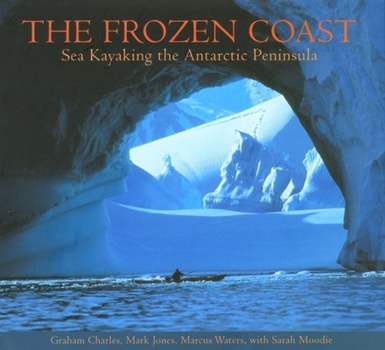Beast of Never, Cat of God: The Search for the Eastern Puma
Somewhere between myth and reality, the truth behind America's last wild predator. This description may be from another edition of this product.
Format:Hardcover
Language:English
ISBN:1592284469
ISBN13:9781592284467
Release Date:January 2005
Publisher:Lyons Press
Length:243 Pages
Weight:1.35 lbs.
Dimensions:1.1" x 6.3" x 9.3"
Customer Reviews
4 ratings
The Eastern Puma Controversy, a Commentary
Published by Thriftbooks.com User , 15 years ago
I am fortunate to live in a region of Michigan near to one of the described "hotspots" of Puma sightings. My friends frequently run a trail where a park service ranger had a young Puma follow her. I have many people that I believe and many that I don't believe tell me they have seen a Panther/Cougar/Puma/ Mountain Lion when I see them in my office. With this and the controversy in the papers I couldn't help but be interested in this book. I can say this book did not disappoint. When I picked it up I was currently reading two other books and just wanted to look it over but started reading it. I couldn't put it down, as Jim Harrison reviewed on the cover "very engaging". I felt that the author did what any of us with the time, curiosity, and writing ability would do to explore the history of sightings and the reliability of the people investigating them. If you want all sides of the Eastern Puma story I can highly recommend this.
Cougar
Published by Thriftbooks.com User , 16 years ago
This book is a most engaging chronicle of the attempts to prove or disprove that the cougar resides in northern Michigan. Being a native of Michigan and a proponent of concerving wildlife, this book led me through forest and glen amid the controversy that pumas (cougars) do indeed, or NOT, exist in this region. Following scientific data and laymen rumors of sightings makes for a great read. This book is very informative and the photographs enhance it visually. The author's personna emerges with subtle humor. The intriguing title of this book lends itself to the mystery. Great book!
The whole controversy.
Published by Thriftbooks.com User , 19 years ago
This is an excellent book that will entertain people from all walks of life. Butz does an excellent job of playing the role of "true reporter", and definitely doesn't play favorites in this book. He tells the saga of cougars in Michigan as he sees it. The truth can be painful, and Butz's pen dishes it out to all of the major players involved. The MWC, DNR, and CN all take their fair share of lashings. On the other side he gives them credit where credit is due. Butz draws you in as only a real life detective can, and holds your full attention to the very end of the book. Those that are new to the controversy of mountain lions living in Michigan will have the entire saga laid out before them. Seasoned veterans who have been following the battle for years will learn many new facts about the evidence of growing puma populations that exist in Michigan and other places in the east. Many readers, that are looking for "the answer", may come away from the book as frustrated as they were before they read it. This frustration seems to stem from the fact that the fuel feeding the controversy is pure political fodder, and has little to do with the simple question of whether or not pumas exist in Michigan and the rest of the eastern states. There are still many questions left unanswered, but the book clears up the major points. The reader is left to form their own opinion about the status of cougars in Michigan which is still definitely up in the air. If you are interested in cougars in the eastern USA this is an absolute must read!
From a 30-year Eastern Cougarmaniac
Published by Thriftbooks.com User , 19 years ago
For more than one hundred years, ever since cougars were pronounced extinct in the eastern US, people have continued to report sightings. Since the 1970s, many have become intrigued with these reports and have attempted to document them with evidence such as tracks, photographs and more recently, with remote camera pictures, hair samples, and scats, which can be identified by DNA analysis. A few confirmations have been logged in the northeastern US and eastern Canada. One state which seems to have more than its share of evidence is Michigan, although no dead bodies have showed up yet. Late in 2001, Dr. Patrick Rusz, biologist for the private Michigan Wildlife Conservancy (MWC), released a report summarizing this evidence and began to search for more. In November, he announced that he had discovered tracks, deer kills, and scats characteristic of cougars on the north shore of Lake Michigan. Later, he found more scats on Michigan's Lower Peninsula. The announcements set off a whirlwind of controversy. Does Rusz have evidence or doesn't he? The author is an outdoor writer who lives on Michigan's Upper Peninsula. For three years he accompanied Rusz on field trips. Butz also considers the possibility of cougar survival elsewhere in the East. It does seem that there is valid evidence in Michigan, but Rusz and the MWC have made major mistakes that have undermined their credibility. Butz concludes that amateurs searching for evidence will never be successful in persuading recalcitrant state wildlife agencies to protect cougars. Nor will a purely scientific approach. It's a political matter as much as anything else. Meanwhile, there is undoubted proof that cougars are extending their range from the Rocky Mountains and Black Hills eastward. Recently two crossed the Mississippi River into Illinois. Their appearance has been greeted a mixture of delight and unwarranted fear. Butz' book is a good read. I recommend it to anyone who is excited about the return of wildness to the eastern United States.





